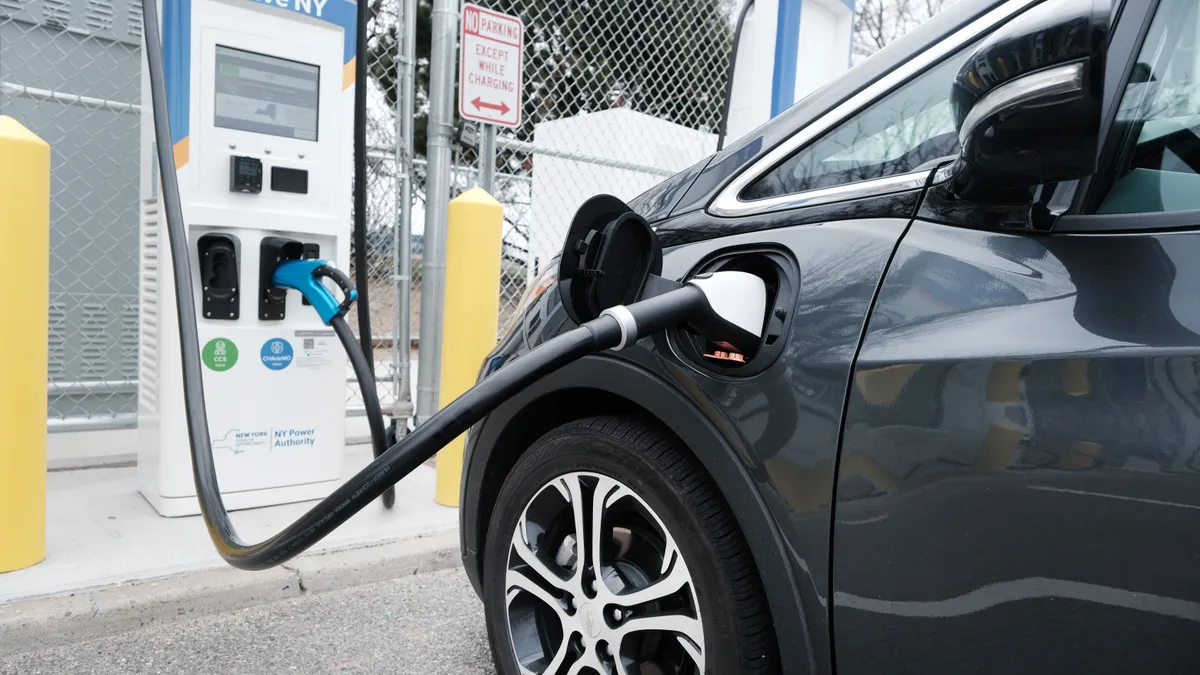The following is a contributed article by Mary Barber, director of state affairs at Environmental Defense Fund.
New York’s flagship climate law, the Climate Leadership and Community Protection Act, or CLCPA, requires every sector of its economy to rapidly decarbonize. Now, the clock is ticking as the Climate Action Council works to deliver the Final Scoping Plan, the roadmap to achieve the law’s targets. However, there is an increasing need for even more urgent action to improve climate resilience, electrify the transportation system, decarbonize the gas system, and identify equitable economy-wide solutions to reduce carbon emissions.
As the Climate Action Council prepares to finalize the Scoping Plan, state regulators must not pass up readily available next steps to advance decarbonization consistent with the law. While the CLCPA establishes clear goals to reduce greenhouse gas emissions, there is no time to pass up any opportunity to achieve New York’s climate targets. New York’s leaders must do the following.
Craft a climate adaptation and resilience plan
As we are seeing with hurricanes Fiona and Ian, and as hurricanes Ida and Sandy made clear, the cost of inaction to address climate impacts is enormous and will continue to grow and worsen inequities. Yet there is no statewide plan to build New York’s capacity to withstand natural disasters and adapt to a changing climate. Creating and implementing a whole-of-government approach to climate adaptation and resilience with clear, measurable goals is the best way to ensure that New York can effectively manage the devastating and costly impacts of climate disasters. To do this, the state needs executive-level coordination for adaptation and resilience activities in the form of a Chief Resilience Officer and a resilience lead at every state agency.
Accelerate zero-carbon transportation infrastructure build-out
Zero-emission trucks and buses are becoming more widely available and are at or near lifetime cost parity with fossil fuel-powered vehicles. Soon, they are likely to become the premier choice for all — from the suburban school district to the e-commerce delivery truck driver.
However, the transition to such a transportation system cannot happen without thoughtful, coordinated infrastructure development, including installing charging stations. Preparing the electric grid to meet the increased demand will be key. Given New York’s medium- and heavy-duty vehicle electrification goals, the projected growth in demand for these vehicles, and the lead times required to get charging stations up and running, we need comprehensive grid planning now. Without these measures, New Yorkers risk losing out on the substantial economic and environmental benefits electric trucks and buses can provide, such as cleaner air, improved public health and reduced transportation costs.
Increase oversight of gas utilities to accelerate the decarbonization of the gas system
To meet its greenhouse gas emissions reduction goals, New York must rapidly reduce its reliance on natural gas. On May 12, the New York State Public Service Commission took a critical first step when it issued two orders to establish a natural gas planning process and create a proceeding to track and assess the progress made toward meeting the CLCPA mandates.
Now, the agency needs to provide clear requirements and policy guidance for gas utility long-term planning to ensure reductions in gas use are achieved equitably. The New York PSC should work with other state agencies to maximize cross-coordination and allocate resources efficiently. For example, state agencies should consider how the GHG Emissions Reduction Pathways Study required by the PSC dovetails with other agencies’ and municipalities’ efforts to downsize the system.
New York should also capitalize on opportunities to rapidly cut methane emissions from existing gas pipelines. Research shows that gas distribution pipelines leak significantly more methane than has previously been reported and can be difficult to identify and locate with traditional leak detection and repair programs. Utilities should be required to use advanced leak detection technology and data analytics (ALD+) to identify where natural gas is leaking from distribution systems.
Institute an equitable economy-wide program to slash greenhouse gas emissions
New York should adopt an economy-wide program to effectively set a limit on annual climate pollution that is well-aligned with existing technology, sector-specific policy, and raises revenues to support the state’s climate and environmental justice goals. This would significantly increase the certainty of achieving greenhouse gas emissions reduction targets in a way that sector-based policies cannot do alone. In addition to increasing emissions reduction certainty, many economy-wide programs are designed to raise revenues that can be invested in programs to further reduce emissions, advance environmental justice, and support the economic transition from fossil fuels. These policies must be designed to improve public health, create economic opportunities, and secure a just transition.
New York’s citizens are counting on our leaders to forge the path ahead for a more climate-resilient, economically vibrant, and equitable future. As we experience the dangerous impacts of climate change, the next steps are critical. Let’s not delay. The state must urgently implement strategies to reduce harmful greenhouse gas and other health-harming emissions and simultaneously establish resiliency strategies to protect its citizens from the impacts of climate change.






















